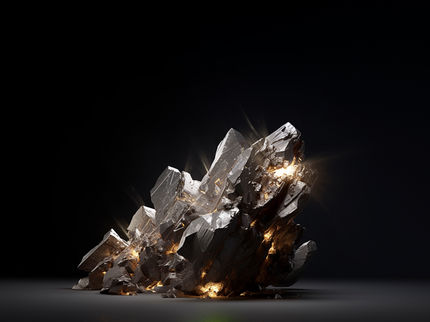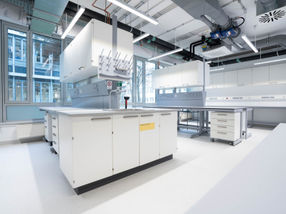New method for sustainable recycling of rare earths from electrolysers
Turning old into new
Advertisement
Hydrogen electrolysis cells contain rare earth metals. Once an electrolysis cell has done its job, the materials used in it currently end up as scrap steel. A research team at TU Bergakademie Freiberg is now investigating how the recyclable materials can be recovered from used electrolysis cells so that they can be used directly for new cells. The researchers are currently publishing their new method in the scientific journal "Journal of Sustainable Metallurgy".
The hydrogen hype makes them sought-after raw materials for the future of energy: so-called rare earth metals such as scandium, lanthanum and cerium. This is because solid oxide electrolysis cells for the production of hydrogen contain around 150 kilograms of rare earth metals per 10 megawatt module. According to the latest results from the team at TU Bergakademie Freiberg, these metals can be recovered from the electrodes of the electrolysis cells using hydrometallurgical processes - and thus reused in the future instead of primary raw materials.
The researchers have already demonstrated their new recycling method in the laboratory: "The results now published were carried out on a small scale of 0.2 grams of cell material per test, but we are already working on transferring the results to a larger laboratory scale of currently up to 50 grams," says researcher Dr Pit Völs.
Environmentally friendly processing of the metals in demand
The team focussed on hydrometallurgical recycling methods, in particular leaching, in which the metal oxides are transferred into an aqueous solution. "To do this, we first mechanically separate the composite of electrodes and solid electrolytes from the steel, which is used as a separating layer and for the electrical contacting of the cells," explains Dr Pit Völs. "We then use acids to leach the rare-earth metals from the electrodes, which we are investigating."
In the further course of the project, the rare-earth metals will then be separated from each other using environmentally friendly chemicals and recycled. The recycling approach developed will also be evaluated using a simulation-based life cycle assessment.
Turning old into new
The results were obtained in the GrInHy3.0 research project together with industry partners. Overall aim is to develop a novel technology for the production of hydrogen in solid oxide electrolysis cells, as the project leader at TU Bergakademie Freiberg, Professor Alexandros Charitos, explains: "The technology will make it possible to return the recycled metals to the material cycle. In the long term, this should minimise the environmental impact of the future waste stream generated during hydrogen production."
The hydrogen production technology will be validated under real operating conditions at the test facilities of the project partners, electrolyser manufacturer Sunfire SE and steel producer Salzgitter Flachstahl GmbH, over the next three years. The plant is expected to produce 14 kilograms of hydrogen per hour in the future.

























































